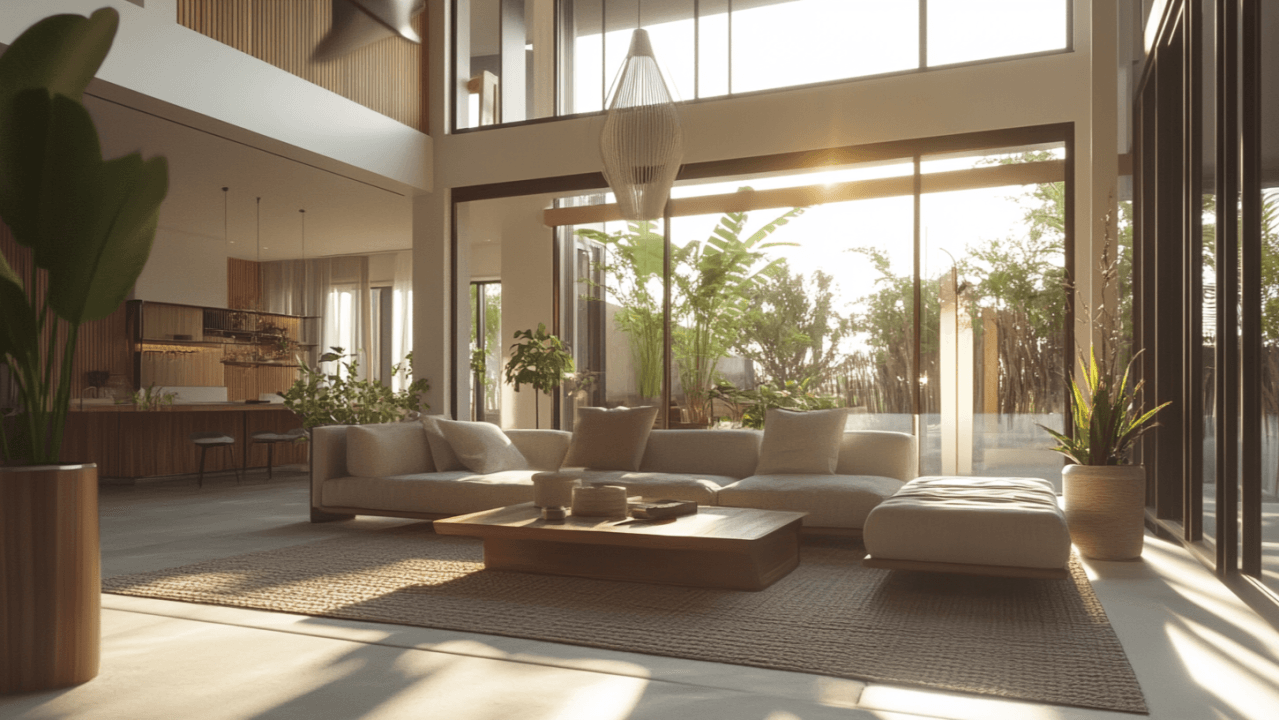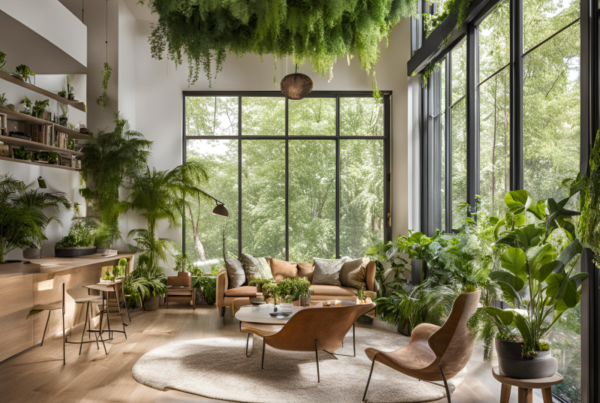In today’s competitive landscape, organizations must prioritize creativity and collaboration to navigate rapid changes in technology and market dynamics. This article explores effective strategies for enhancing work environments that foster innovation. By focusing on workspace design, integrating nature, leveraging technology, and cultivating a collaborative culture, businesses can create settings that encourage fresh ideas and effective problem-solving. Understanding how these elements interconnect will help leaders build resilient teams capable of driving sustainable growth amidst ongoing challenges.
Table of Contents
Redesigning Workspaces for Enhanced Creativity
In today’s fast-paced work environments, creativity has emerged as a vital driver of innovation and productivity. Redesigning workspaces to enhance creativity is not merely an aesthetic upgrade; it presents a unique opportunity to cultivate an atmosphere that sparks imagination and inspires innovative thinking. This exploration begins with understanding how the physical and psychological elements of space influence the creative process.
The Importance of Space Layout
The layout of a workspace plays a crucial role in determining both individual and collaborative creativity. By adopting an open-plan design, companies can remove barriers and encourage collaboration. However, it’s essential to strike a balance; spaces must still offer areas for privacy when concentrated work is required. Considerations for optimal layout include:
- Flexible Zones: Create versatile spaces that can be reconfigured for different projects or activities. Movable furniture and multifunctional areas can adapt to team needs.
- Designated Creative Areas: Include specific zones that inspire innovation, like brainstorming rooms equipped with whiteboards, comfortable seating, and even art supplies.
- Quiet Spaces: Introduce soundproof rooms or ‘focus booths’ for individuals to remove distractions and immerse themselves in deep work.
Incorporating Color Psychology
The use of color in workspace design is a powerful tool that can influence mood and productivity. Colors evoke emotions and can enhance cognitive functions, ultimately impacting creativity. For instance:
- Blue: Often associated with calmness, blue shades can promote concentration and encourage deep thinking.
- Green: Linked to nature, green can inspire creativity and reduce stress.
- Yellow: A color that sparks optimism and encourages collaboration and happiness in a team setting.
By strategically choosing colors that resonate with a company’s culture and creative goals, businesses can create an environment designed for innovation.
Biophilic Design
Integrating nature into workspace design—an approach known as biophilic design—can significantly enhance creativity. Research shows that natural elements can reduce stress and improve cognitive function. Here are some ways to incorporate biophilic elements:
- Natural Light: Maximizing the use of natural light can enhance mood and energy levels, making it easier to engage in creative thought.
- Indoor Plants: Introducing greenery can cultivate a more vibrant atmosphere and improve air quality, which in turn can boost mental clarity and focus.
- Natural Materials: Utilize wood, stone, and other organic materials in furniture and decor to create a sense of connection to the natural world.
Technology and Innovation
While incorporating natural elements is crucial, integrating the right technology can also foster creativity. Interactive displays, virtual reality tools, and collaborative software can enhance brainstorming sessions and project management. Emphasizing technology in workspace redesigns can include:
- Smart Collaboration Tools: Equip meeting rooms with high-tech tools that allow for seamless communication and brainstorming, regardless of team members’ physical locations.
- Flexible Tech Workstations: Setting up standing desks or shared tech hubs encourages movement and dynamic work, which can break up the monotony and stimulate new ideas.
- Interactive Wall Spaces: Walls that permit drawing or posting ideas encourage spontaneous creativity during discussions and meetings.
When approaching workspace design, it’s critical to treat the environment as a canvas for creativity rather than just a functional place to work. By thoughtfully redesigning workspaces through layout, color, biophilic, and technological elements, businesses can cultivate an atmosphere that naturally encourages innovation.
For further reading on the impact of workspace design on creativity, you can check out articles on Killer Innovations.
The Role of Nature in Stimulating Innovative Thinking
In today’s rapidly evolving world, the intersection of innovation and creativity has emerged as essential components for success across industries. While many organizations focus on technology and workplace design for enhancing creativity, an often overlooked factor is the profound impact of nature. Numerous studies have demonstrated that exposure to natural environments can significantly stimulate innovative thinking, leading to breakthroughs and creative solutions.
The Connection Between Nature and Cognitive Performance
Research indicates that engaging with nature can enhance cognitive functions, including memory and problem-solving skills. Exposure to green spaces has been shown to improve attention capacity and creativity, allowing individuals to focus better and think more clearly. A study published in the *Journal of Environmental Psychology* found that participants who walked in a natural environment demonstrated a 50% increase in creative problem-solving abilities compared to those who walked in an urban setting.
- Attention Restoration Theory: This theory suggests that natural environments provide an antidote to mental fatigue, allowing the brain to recover and rejuvenate its capacity for creativity.
- Biophilic Design: Incorporating elements of nature into workspace designs, such as plants and natural light, can significantly boost employee morale and innovative thinking.
Nature as a Catalyst for Ideation
Surroundings play a crucial role in shaping the way we think. Nature not only stimulates the mind but also inspires creativity by encouraging individuals to break free from conventional thinking patterns. The unpredictability of natural environments—think of the varied shapes of leaves or the randomness of cloud formations—prompts innovative connections between seemingly unrelated ideas.
Moreover, immersing oneself in nature can invoke a sense of calm and clarity. When individuals feel less stressed, they are more open to exploring unconventional ideas and taking creative risks. When confronted with challenges, stepping outside for a moment can be a powerful tool for brainstorming solutions. This phenomenon aligns with the insights from research conducted by the University of Utah, which suggests that simply being in nature can lead to improved problem-solving capacities.
Implementing Nature in Innovation Strategies
To harness the benefits of nature for innovation, organizations can integrate various strategies into their practices:
- Outdoor Workspaces: Creating outdoor meeting areas or flexible workspaces in natural settings allows teams to collaborate while enveloped in nature.
- Nature Retreats: Organizing team-building retreats in natural locations can foster creativity through shared experiences in an inspiring environment.
- Green Initiatives: Planting gardens or incorporating greenery into office spaces is not only aesthetically pleasing but also serves to refresh the minds of employees.
Additionally, adopting a biophilic approach—one that emphasizes natural elements in design—can lead to higher levels of engagement and creativity. Studies have found that offices featuring plants, water features, and natural materials create more stimulating environments, where innovation can flourish.
Conclusion and Transition to Further Innovation Strategies
In summary, the role of nature as a catalyst for innovative thinking cannot be underestimated. By recognizing and utilizing this connection, organizations can create an environment that encourages creativity, motivates teams, and leads to powerful solutions. Exploring how technology can further enhance these natural interactions will be crucial as we advance in creating spaces that foster creativity.
Technology Integration in Creative Environments
In today’s fast-paced world, the integration of technology into creative environments plays a critical role in innovation and productivity. As workplaces evolve, leveraging technology not only enhances the creative process but also fosters collaboration and communication among team members. This section delves into the various ways technology can be harnessed to cultivate creativity and drive innovative thinking.
The Importance of Technology in Creativity
Technology serves as an enabler of creativity by providing tools that streamline processes and facilitate new ideas. Some key reasons why technology is essential in creative environments include:
- Enhanced Connectivity: Modern communication tools allow for easy sharing of ideas and feedback, breaking down geographical barriers. For instance, platforms like Slack or Microsoft Teams foster seamless interaction among team members, making brainstorming sessions more productive and dynamic.
- Access to Resources: Technology provides access to vast resources, including digital libraries, online databases, and design tools, which can serve as inspiration for creative work. Software like Adobe Creative Suite empowers designers with advanced tools for graphic design, video editing, and web development.
- Data-Driven Insights: Utilizing analytics tools helps teams gather insights into customer behavior and market trends, which can spark innovative ideas. For example, platforms like Google Analytics allow creatives to tailor their work based on real-time data.
Tools that Boost Creativity
Integrating specific tools can significantly enhance creativity within teams. Here are several essential technology tools that can be used in creative environments:
- Project Management Software: Tools like Asana and Trello help streamline project workflows, ensuring that creative ideas are organized and actionable.
- Collaboration Apps: Applications such as Miro offer digital whiteboard spaces that facilitate brainstorming sessions and visual collaborations.
- Virtual Reality (VR) and Augmented Reality (AR): These technologies are revolutionizing how teams conceptualize and visualize their projects, allowing them to experience their creative ideas in immersive environments.
Strategies for Effective Technology Integration
To maximize the benefits of technology in creative settings, organizations should adopt specific strategies:
- Training and Development: Regular training sessions on new technologies ensure that all team members are proficient and can leverage tools effectively. Providing ongoing professional development opportunities can significantly enhance creative capabilities.
- Encouraging Experimentation: Create a culture where experimentation with technology is welcomed. This allows teams to explore new ideas without the fear of failure, fostering an environment conducive to innovation.
- Feedback Loops: Establish regular feedback loops to assess the effectiveness of integrated technologies. Listening to team members’ experiences and suggestions can lead to continuous improvement of tools and processes.
The Future of Technology in Creative Environments
As technology continues to advance, its role in creative environments will only expand. Innovations such as artificial intelligence (AI) and machine learning are set to revolutionize the way creative processes are approached. For instance, AI-driven tools can analyze vast amounts of creative data to suggest design elements or marketing strategies, significantly reducing the time required for ideation.
Moreover, the rise of remote work emphasizes the necessity of robust technology solutions that maintain creative collaboration regardless of physical proximity. Enhancing virtual workspaces with immersive technologies can transform how teams engage and innovate together.
In summary, effectively integrating technology into creative work environments is vital for fostering innovation and collaboration. By leveraging the right tools and strategies, organizations can elevate their creative processes, paving the way for fresh ideas and groundbreaking solutions.
 Fostering Collaborative Cultures to Drive Change
Fostering Collaborative Cultures to Drive Change
In today’s fast-paced world, organizations face constant shifts in market dynamics, technology, and consumer behavior. To navigate these changes effectively, fostering a collaborative culture has become essential. A collaborative work environment encourages teamwork, innovation, and creative problem-solving—key components for sustainable growth and adaptability.
The Importance of a Collaborative Culture
Collaboration involves the merging of diverse perspectives, skills, and experiences. In an age where challenges are increasingly complex, collaboration fuels creativity and innovation, allowing teams to develop multifaceted solutions. Here are some reasons why fostering a collaborative culture is vital:
- Enhanced Problem Solving: Diverse teams can approach problems from various angles, leading to more innovative solutions.
- Increased Employee Engagement: When team members feel their voices are valued, they are more likely to invest in their work and the organization’s success.
- Knowledge Sharing: A collaborative environment encourages sharing of knowledge and skills, reducing silos within the organization.
Strategies for Fostering Collaboration
To create a collaborative culture, organizations must intentionally implement strategies that break down barriers and promote teamwork. Here are effective methods to encourage collaboration:
- Encourage Open Communication: Establish open lines of communication where employees can freely share ideas without fear of judgment. Regular meetings and brainstorming sessions can facilitate this transparency.
- Leverage Technology: Utilize collaboration tools such as Slack, Trello, or Microsoft Teams which enhance connectivity and streamline projects across different locations.
- Build Cross-Functional Teams: Assemble teams from different departments to work on projects, fostering a blend of skills and insights that can drive innovation.
- Recognize Collaborative Efforts: Highlight and reward collaborative achievements within the organization, reinforcing the value placed on teamwork.
- Provide a Supportive Environment: Design workspaces that cater to collaboration, such as open areas for team meetings, quiet zones for focused work, and social spaces that encourage casual interactions.
The Role of Leadership in Cultivating Collaboration
Leadership plays a crucial role in establishing a collaborative culture. Leaders must model collaborative behaviors, set clear expectations, and provide support. Effective collaboration requires a shift from a traditional command-and-control leadership style to one that embraces a more participative approach:
- Model Collaborative Behavior: Leaders should demonstrate collaboration by actively engaging with their teams, showing vulnerability, and being open to feedback.
- Develop Trust: Building trust is essential for collaboration. Leaders can foster this by being transparent in decision-making and showing appreciation for team contributions.
- Create a Safe Environment: Encourage risk-taking and experimentation without the fear of failure. This type of environment empowers team members to share bold ideas.
Measuring the Impact of Collaboration
To ensure that collaborative practices are effective, organizations should establish metrics to evaluate their impact. Potential metrics include:
- Employee Engagement Scores: Regular feedback instruments can assess how engaged employees feel in collaborative efforts.
- Project Success Rates: Comparing the success rates of projects run collaboratively versus those executed in isolation can highlight the benefits of teamwork.
- Innovation Metrics: Tracking the number of new ideas generated, patents filed, or products developed in a collaborative setting will indicate the culture’s efficacy.
In conclusion, fostering a collaborative culture is not just an organizational advantage; it is essential for survival in an ever-evolving global landscape. By encouraging open communication, leveraging technology, and prioritizing leadership’s role in collaboration, organizations can drive significant change and innovation. As we explore further in the next section, the relationship between fostering collaboration and embracing innovation will showcase how these elements intertwine to build resilient organizations. Creating an innovative workspace involves strategically designing areas that enhance individual focus and collaborative creativity. It is essential to incorporate flexible zones, designated creative areas, and quiet spaces to balance collaboration and concentration. Additionally, using color psychology can impact mood and productivity—colors like blue promote concentration, green inspires creativity, and yellow fosters optimism. Integrating natural elements through biophilic design and technology can further enhance creativity. Leveraging tools such as project management software and collaboration apps can streamline communication and foster an environment for innovative thinking.
To build a collaborative culture, organizations should promote open communication, utilize technology for connectivity, and recognize team achievements. Leadership plays a vital role by modeling collaborative behavior, developing trust, and creating a safe environment for sharing ideas. Establishing clear metrics to assess employee engagement and project success will help gauge the effectiveness of collaborative efforts. Together, these strategies can drive sustainable growth and adaptability in today’s dynamic business landscape.



 Fostering Collaborative Cultures to Drive Change
Fostering Collaborative Cultures to Drive Change

